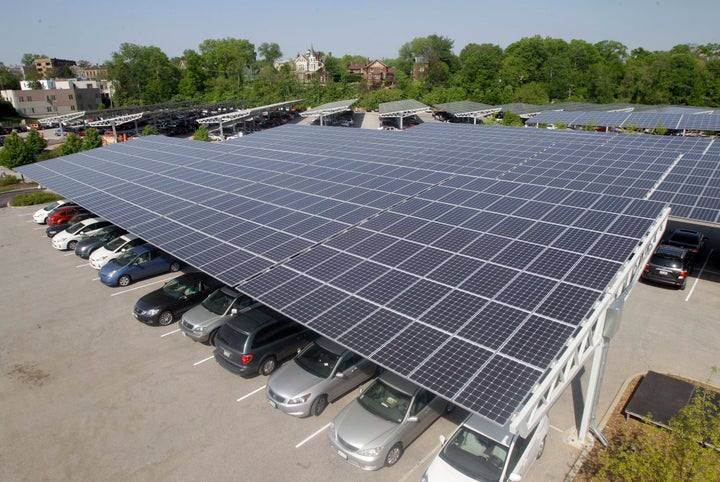
On Friday, Secretary of Energy Stephen Chu announced a "game changing" development in solar energy. A company called 1366 Technologies, headquartered in Lexington, Mass., has developed a silicon solar wafer that would cut the cost of solar cell manufacturing by an estimated 50 percent.
The wafer technology was developed with the support of a pilot innovation investment program housed under the Department of Energy, known as the Advanced Research Projects Agency - Energy (ARPA-E). According to director Arun Majumdar, "ARPA-E is looking for high risk ideas that, if successful, can be high impact. Those that don't exist today."
Unlike traditional wafers--which are sliced from a large block, resulting in considerable losses of material (up to 50 percent)--these new wafers are individually cast to specific measurements, a more efficient model of production.
In 2009, ARPA-E made an initial $4 million dollar investment in 1366 Technologies, and on Friday, announced it would make an additional $150 million dollar loan guarantee to take the company's research and development to the next level.
If projections regarding cost savings are accurate, solar may be on its way to becoming competitive with traditional fossil-fuels -- though some in the industry remain concerned about barriers still in place.
"There are two main areas of concern: price and value," said Brian Keane, president of Smart Power, a green energy marketing group. Keane explained that the primary "value" of solar "is that it's good for the environment. But quite frankly, no American actually thinks that's good value."
Keane says that U.S. consumers need to be convinced that solar is a viable proposition. "The perception is that solar is an idea from the 1970s that just didn’t work. They think it’s not strong enough to power their lives, compared with oil, coal and nuclear power."
Still, Keane added, "If we can cut the price [of manufacturing] in half, that really helps us with the value proposition to the American people."
Others point to concerns around the marketplace itself. Lew Milford, president of the Clean Energy Group, a non-profit advocacy group focused on energy and climate concerns, said that many new and innovative technologies fail because they never reach commercialization. Milford called this the "valley of death" that innovative tech companies must cross after their initial rounds of funding, and the hurdle that oftentimes prevents them from becoming scalable and reaching market potential.
Milford suggested that the problem of access to capital might be solved with something like the President's suggested--"Clean Energy Bank"--to finance clean energy initiatives, but acknowledged that the highly political climate surrounding budget negotiations would complicate its creation.
With ARPA-E in particular, Milford thought that a better and more robust relationship with state governments was essential for the success of the agency's investments. "In the end, I think states are a really critical backstop for all of this," he said. "State policy is increasingly going to create these markets."
While many state governors remain skeptical of climate change policy and energy reform on the whole, Milford contended that many of the same governors were nonetheless supportive of clean energy technology, given its potential to create jobs and strengthen state economies. By way of an example, Milford pointed to New Jersey governor Chris Christie, who is critical of climate change concerns but remains "a strong supporter of offshore wind farms in the state."
"ARPA-E just doesn’t have the states as customers," said Milford, and it still needs to figure out "how to you commercialize the products that it is funding."
ARPA-E director Majumder insisted that the agency already has a close relationship to the states. As evidence, he pointed a program, Sunshot, that specifically addresses the question of cost competitiveness and solar technology. "We have a very close relationship with the states," he said.
Majumder said that one of his primary concerns around solar energy had to do with manufacturing: "In the mid-90s, the U.S. had 40 percent of the manufacturing of photovoltaic cells," he explained. "Now we have less than 5%. We have to regain that technology lead back -- and that will be based on innovation in the U.S."